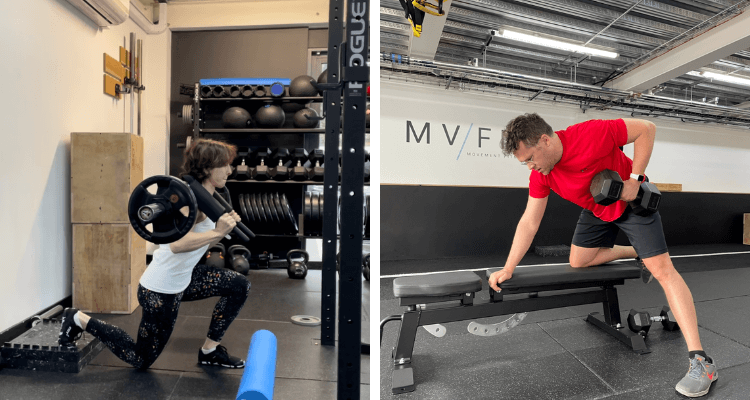

So how do you calculate training load?
When we talk about training load, volume is a key part of this. Intensity is the other part.
Volume
Volume is the measurement of total weight lifted.
You can calculate this by using the following equation: Sets x Reps x Weight
So if you perform 3 sets of 10 reps of 100kg on the deadlift, you have performed a total volume of 3,000kg (30 reps of 100kg).
So what is optimal progression in this example?
Week 1 - 3 sets of 10 reps of 100kg (3000kg in volume)
Week 2 - 3 sets of 11 reps of 100kg (3300kg in volume)
Week 3 - 3 sets of 12 reps of 100kg (3600kg in volume)
This is a 10% increase in training volume per week which is fantastic.
So keeping your weight the same and increasing your reps by just one more per set is a massive achievement and is not something to be downhearted about.
This is actually what really strong progress looks like.
You would bite the hand of a financial adviser who said I'm going to increase your wealth by 10% per week.
But so often we hear people are upset when they are stuck at the same weight for more than a few weeks, even though they are gradually doing better and adding more reps each week.
But don't be.
You are doing great and need to just keep going.
This is a totally normal part of the training process and something that happens to everyone.
So keep showing up each week, you are making more progress than you know.
Intensity
Another way in which you can drive progress and increase training load is by increasing the intensity.
Intensity is a measurement of how much weight is lifted.
So in the example below, you could gradually increase the load lifted to drive improvement.
Week 1 - 3 sets of 10 reps of 100kg (3000kg in volume)
Week 2 - 3 sets of 10 reps of 102.5kg (3075kg in volume)
Week 3 - 3 sets of 10 reps of 105kg (3150kg in volume)
Now this is a 2.5% increase in training volume per week which is also an incredible improvement. In this example, even though 2.5% doesn't sound like a lot but I can assure you it is.
In fact, aiming for greater increases in weight lifted per week could be unrealistic and also unsafe.
Going for max weight increases every single week could be a one-way ticket to pain and could eventually lead to overuse injuries.
Your body needs time to gradually adapt your muscles, tendons and ligaments to the loads and demands placed upon it. So be careful when increasing your intensity.
It is best advised to work with a coach to help you gradually increase both your intensity and volume safely over the course of time. We can help you do that.
Coaches Pro Tip
Volume increases occur at a faster rate than load increases, especially the longer you have been training. So it is important to make gradual and steady improvements in both.
When you can't necessarily increase your weight, you might want to have a few weeks where you focus on volume increases only before adjusting the intensity (load on the bar).
Dominate the weight, move it with intent and gradually build up the reps.
So in summary, you can use volume or intensity as the driver of progress.
Lastly, it is important to note here that 10% is a guide only, and so week by week this could vary considerably. Some days there might be a big jump, other days could be considerably smaller jumps or no jumps at all.
One week you might be able to increase by 10%, the next 2%, the next 5% and so forth. Training progress is never linear. So don't worry if you can't make big improvements week on week.
If you keep sticking at it and showing up each week, you will ultimately make the best progress possible.
If you have any questions on this blog or on anything that we might be able to help with, don't hesitate to get in touch.
- Coach Alex

If you would like to learn more, please leave your contact details and we will be in contact.
Contact Us